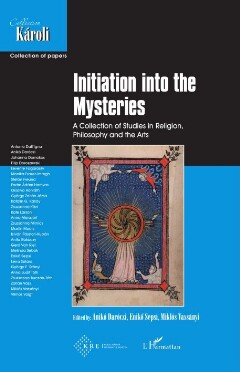

OCR
GYÖRGY ZOLTÁN Józsa Before dying, in one manner or another, even if only by a looking into its own state, it has the feeling ofthe presence of another world. At the silent urgings, the distant calls, the dim rays of the Invisible, earth has already lost its solidity, and when the soul finally escapes the cold body, joyful because of its deliverance, it feels itself lifted in a great light toward the spiritual family to which it belongs.” As we learn from the words of Prognost, Sinaret is “on the threshold of hidden secrets,” the Aeromakh “has undergone all the stages of initiation long before,” of which, in harmony with Pythagoras’ sacred Tetraktys, there are four. The symbolism of the number four, having been termed “The Godly Tetrasomia” in C. G. Jung’s analytical psychology,? features as a recurring constructive principle governing the architectonics of Bryusov’s play: apart from the slave, there are four dramatis personae, and the play consists of four parts indicated by the numbering of scenes. The number four as the sign of God symbolizes the apotheosis of the mortal. Sinaret, having undergone the second stage — this is voiced by Gorgij —, faces the third stage of initiation, the one which Schuré calls the “knowing of the other world.” The era in Geistesgeschichte marked by the standing of Pythagorean communities may have attracted Bryusov as something akin to his time for numerous reasons. Pythagoreanism came from a complex of wanderings, initiations, and real-life experiences of the founder of the religion. In his book The Great Initiates, Schuré says: “His experience showed him mankind threatened by the greatest calamities, by the ignorance of priests, the materialism of scientists and the lack of discipline of democracies.”*! The period following the foundations of the Pythagoreans’ academy is famous for the treason of the poet Empedocles, who pronounced the secret teachings of Pythagoras in his verse. If Pythagoras, who, as we learn from Schuré, merged morality, religion, and science into a single system of synthesis, personifies the ideal of Russian Decadents and Symbolists, who rejected the Satanic world, seen by them as disintegrated due to the conflicting 3 Edouard Schuré, The Great Initiates: A Study of the Secret History of Religions. Blauvelt, Steinerbooks, 1976, 332-333. In his work Philosophical Tree, Jung, providing a reading of symbolic alchemy, lists the semantic layers of the Symbolism of the number four and asserts a link to the making of the lapis which is conceived as the unification of two conflicting principles (it is produced from four elements): “The aim of the tetrasomia is the reduction (or synthesis) of a quaternion of opposites to unity” [Carl Gustav Jung, Alchemical Studies, London, Henley, Routledge & Kegan Paul, 1981, 278]. The number four is the sign of God [ibid., 281], man’s wholeness and the healing effect of unification (synthesis) is symbolized by the four corners of the cross. Jung also states that this tradition of the cult of Tetraktys is deeply rooted in the teachings of the Pythagoreans, and it dates back to Egyptian Antiquity [Ibid., 283]. By including the same symbol in his work Aion, Jung demonstrates how it is associated with the status of reaching into the depth of human consciousness, into the Self. 31 Schuré, The Great Initiates, 282. 30 + 270 ¢ Daréczi-Sepsi-Vassänyi_Initiation_155x240.indb 270 6 2020.06.15. 11:04:23
Szerkezeti
Custom
Image Metadata
- Kép szélessége
- 2074 px
- Kép magassága
- 3078 px
- Képfelbontás
- 300 px/inch
- Kép eredeti mérete
- 1.31 MB
- Permalinkből jpg
- 022_000071/0271.jpg
- Permalinkből OCR
- 022_000071/0271.ocr
Bejelentkezés
Magyarhu
